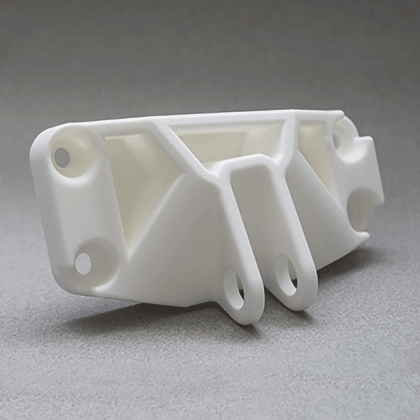When it comes to product development in the aerospace industry, the use of Selective Laser Sintering (SLS) prototyping has proven to be a game-changer. This innovative technology offers a wide range of benefits that can significantly improve the efficiency and effectiveness of the product development process. In this article, we will explore how SLS prototyping can help enhance product development in the aerospace industry and revolutionize the way new aircraft and spacecraft are designed and manufactured.

Streamlined Iterative Design Process
One of the key advantages of SLS prototyping in aerospace product development is its ability to facilitate a streamlined iterative design process. Engineers and designers can quickly create and test multiple iterations of a component or assembly, allowing for rapid refinement and optimization of the final product. This iterative approach enables faster development cycles and ultimately leads to the creation of more advanced and reliable aerospace products.
Complex Geometries and Lightweight Structures
Another significant benefit of SLS prototyping is its capability to produce complex geometries and lightweight structures that are difficult or impossible to achieve using traditional manufacturing methods. This is particularly advantageous in the aerospace industry, where weight reduction is a critical factor in improving fuel efficiency and overall performance. By leveraging SLS prototyping, aerospace engineers can design and manufacture intricate components with optimized geometries that maximize strength while minimizing weight.
Cost-Effective Low-Volume Production
SLS prototyping also offers a cost-effective solution for low-volume production of aerospace components. Traditional manufacturing processes often involve high setup costs and long lead times, making them impractical for small production runs. With SLS prototyping, aerospace companies can produce low volumes of parts and components without incurring exorbitant expenses, making it an ideal solution for prototyping and small-batch production in the aerospace industry.
Material Innovation and Customization
Furthermore, SLS prototyping enables material innovation and customization, allowing aerospace engineers to explore new materials and develop tailored solutions for specific applications. This flexibility in material selection and customization is invaluable in the aerospace industry, where the performance and reliability of materials are of utmost importance. By harnessing the capabilities of SLS prototyping, aerospace companies can push the boundaries of material science and create advanced components that meet the stringent requirements of aerospace applications.
In conclusion, the adoption of SLS prototyping in the aerospace industry has the potential to revolutionize product development processes and drive innovation in aircraft and spacecraft design. The benefits of streamlined iterative design, complex geometries, cost-effective production, and material innovation make SLS prototyping a powerful tool for improving product development in the aerospace industry. As technology continues to advance, we can expect SLS prototyping to play an increasingly pivotal role in shaping the future of aerospace engineering and manufacturing.







